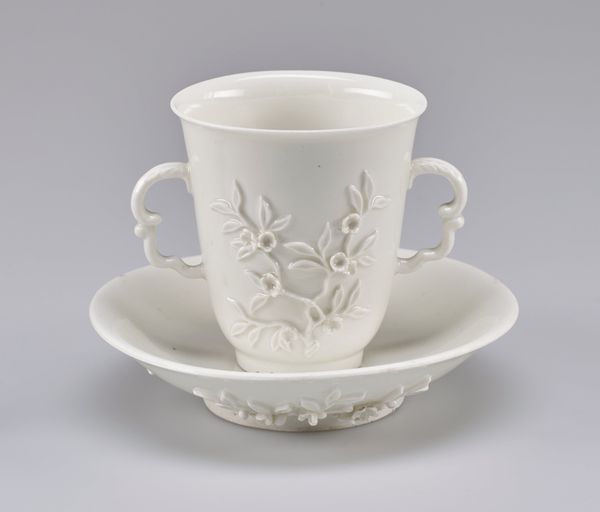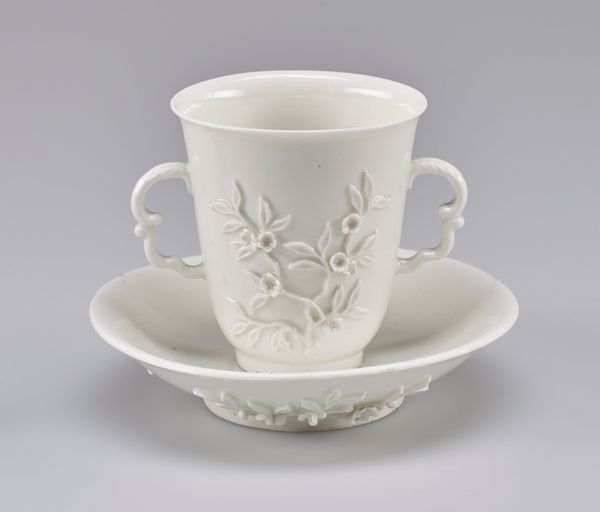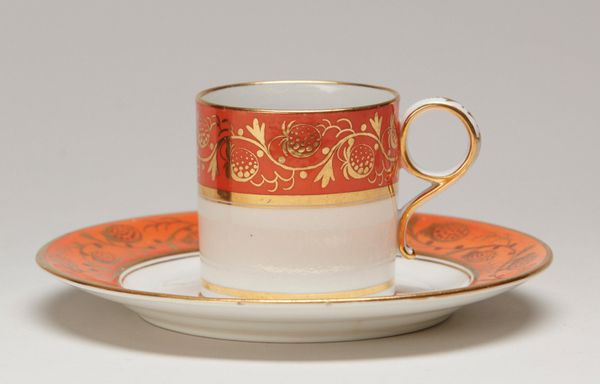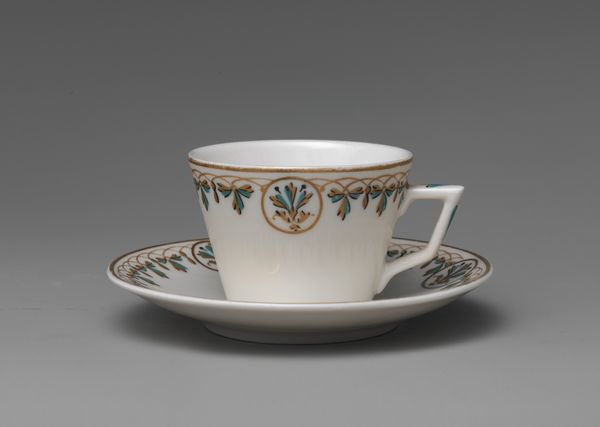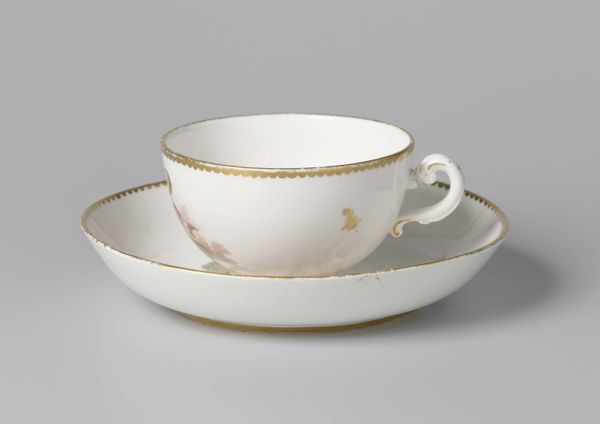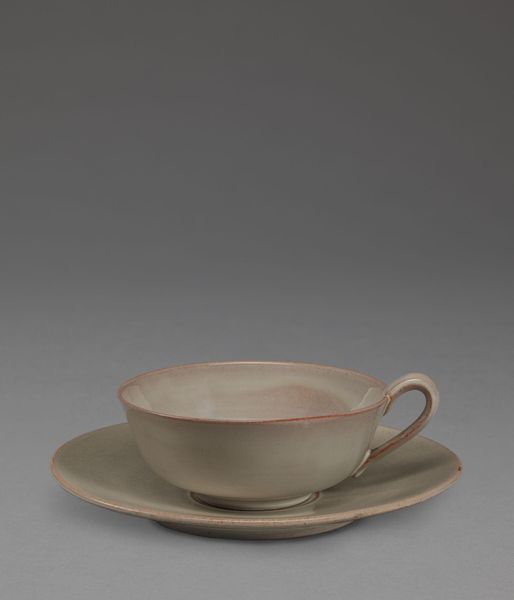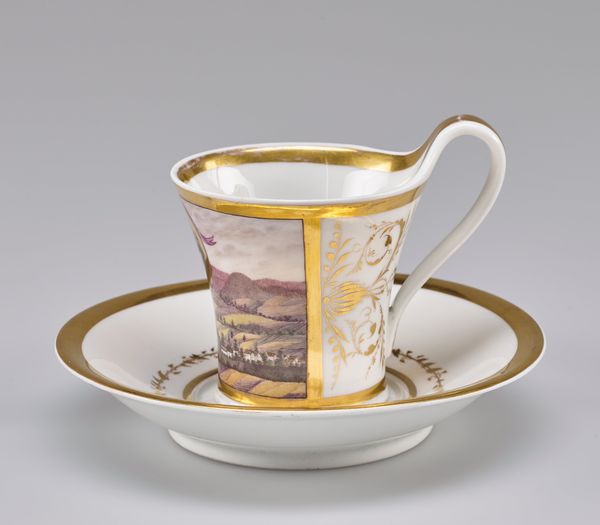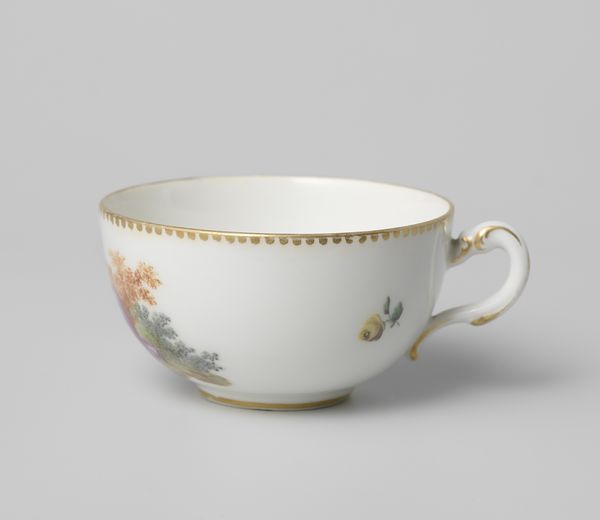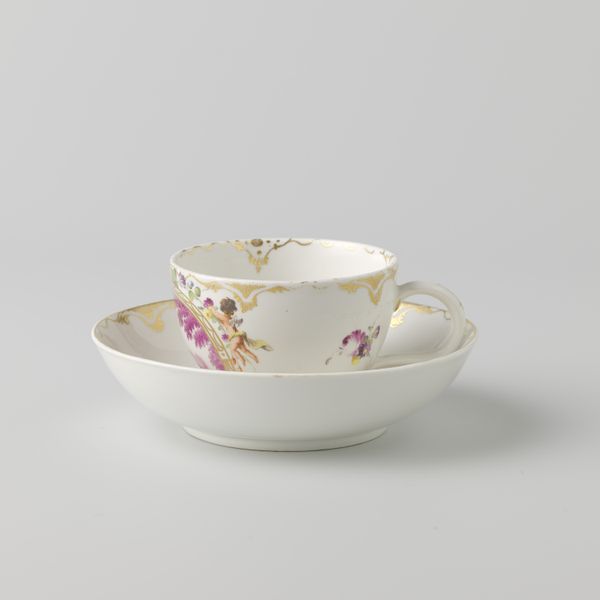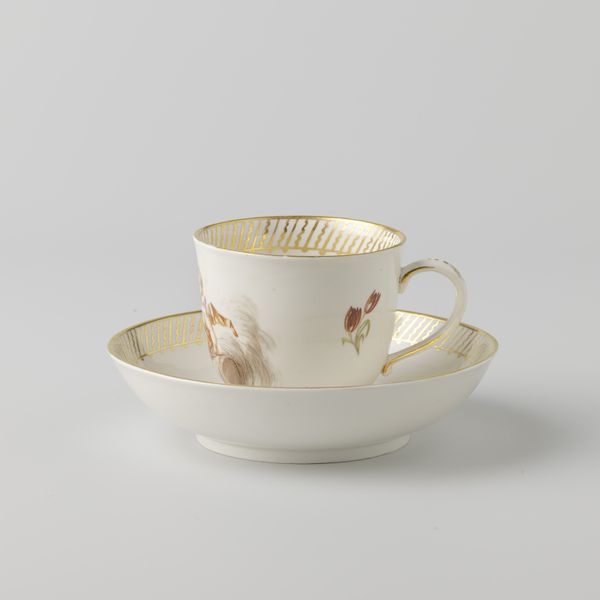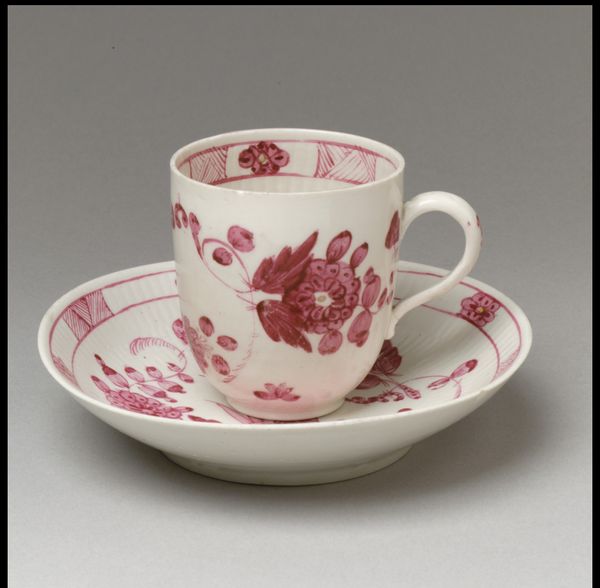
ceramic, porcelain
#
ceramic
#
porcelain
#
decorative-art
Dimensions: Cup: H.: 7 cm (2 3/4 in.); saucer: diam. 15.3 cm (6 in.)
Copyright: Public Domain
Curator: Up next we have, “Cup and Saucer”, a piece created by Tucker and Hemphill, sometime between 1826 and 1838. It’s made of porcelain. Editor: It's funny how an object as simple as a teacup can feel so grand. Almost theatrical. Do you ever feel like you’re acting out some elegant drawing-room scene just holding it? Curator: It's intriguing that you frame it as theatrical, because I see the object as defined by geometric form. Observe how the eye travels along the lip of the cup and saucer, each edged with lines of gold. Editor: Lines that create this restrained elegance, right? It’s that classic white and gold combination. Though look closely, the embellishments aren’t perfectly aligned; they have this endearing, hand-painted wobble. Curator: Yes, the asymmetry breaks up the static quality inherent in pure symmetry. What I find striking is the balance—how Tucker and Hemphill manage to equally distribute the weight of detail between the cup and its accompanying saucer. Editor: Exactly. It feels almost too precious to actually use. Though, to be honest, it also makes me want to host a tea party. Perhaps with tiny cakes and even tinier sandwiches. The ornamentation is more playful than pretentious—a whimsical dance of gilded flourishes. Curator: Indeed. If we analyze the negative space between the embellishments we see a mirroring of the same visual rhythm set out by the composition of the object as a whole, which brings a pleasing unity to the entire design. Editor: It makes me think of sipping tea while plotting a novel, maybe something romantic and a bit scandalous. It's a vessel holding stories, not just liquids. I wonder who drank from it, and what secrets it held? Curator: In reflecting on the visual analysis, the object stands not simply as functional pottery, but as a potent expression of decorative arts with deep cultural associations. Editor: Well, from my side, thinking of secrets held inside objects—sometimes the best insights come from just imagining those unseen narratives. Thank you for allowing me this delicious little reverie.
Comments
No comments
Be the first to comment and join the conversation on the ultimate creative platform.
